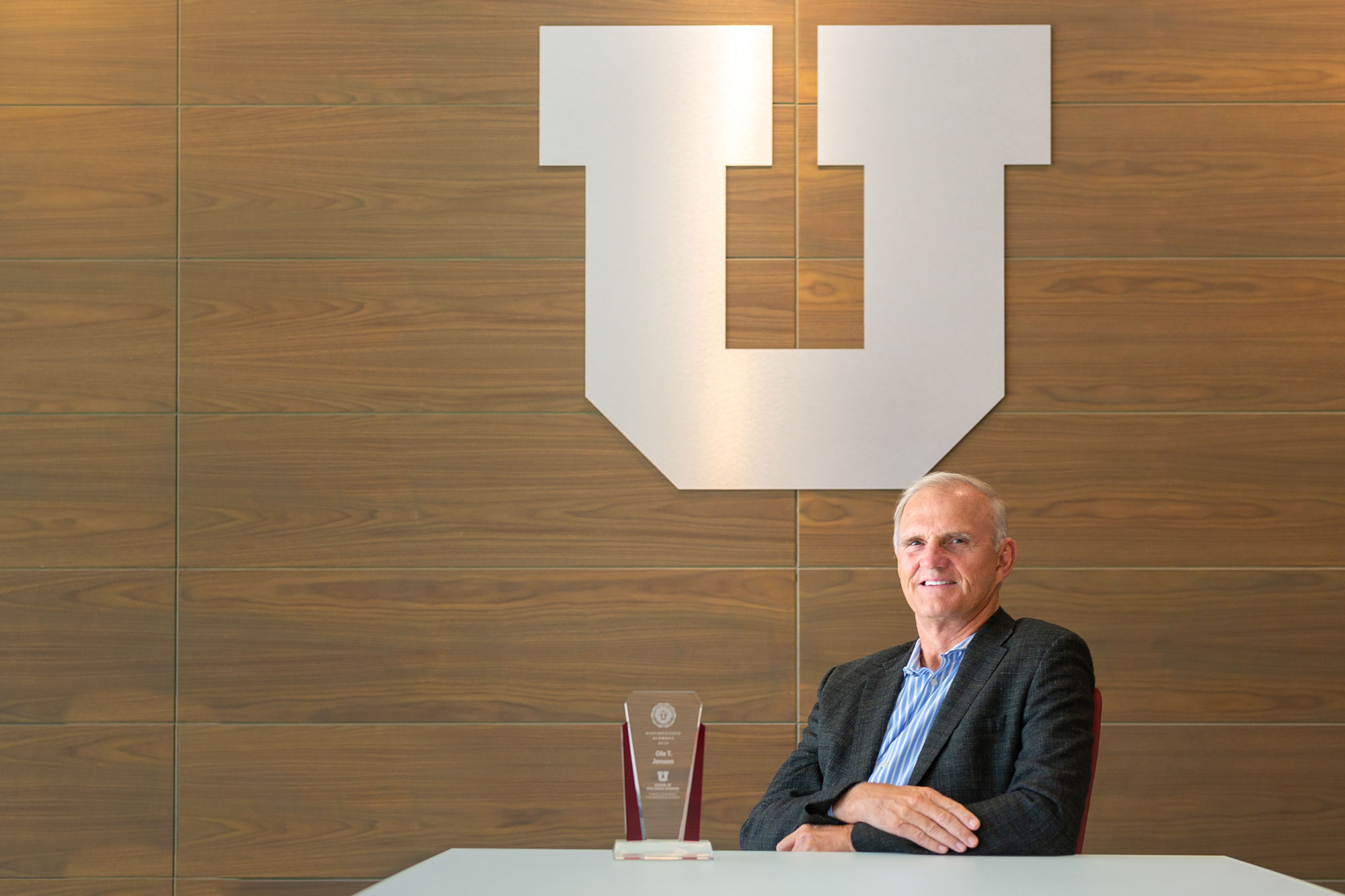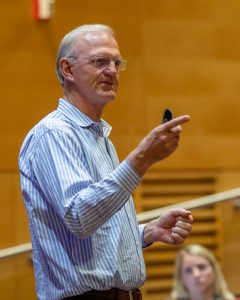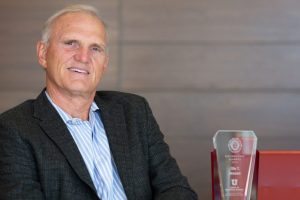
On the surface, Ole Jensen’s start as an undergraduate biology major, angling for medical school, didn’t appear particularly auspicious. His one claim to fame was that as an undergraduate the Salt Lake native was tapped to be a “calf sitter,” which meant that he would sit all night with young bovine used in experiments and monitor their heart rates. The calves were a critical part of the University’s artificial organ program which would eventually produce the world’s first artificial heart in the 1980s.  Not bad for a Utah boy who, when he wasn’t fishing with his Norwegian-born father on the Provo River and elsewhere, spent much of his early life collecting what would become one of the largest insect collections in the state.
Not bad for a Utah boy who, when he wasn’t fishing with his Norwegian-born father on the Provo River and elsewhere, spent much of his early life collecting what would become one of the largest insect collections in the state.
It was a heady time to be studying biology at the U. Department Chair Gordon Lark was bringing in guest lecturers and expanding the faculty at a prodigious rate, including micro-biologist Mario Capecchi who would eventually be awarded the Nobel Prize for his work in genetics. Jensen recalls his time in the early seventies as an undergraduate at the U. One day, he says, anatomy professor Stephen Durrant “threw out twenty animal bones spread over a long table and asked the students to identify […them] as part of the midterm exam.” It turned out that the students, who in class had been studying strictly land mammals, got very few correct answers. “One bone that very much perplexed me that I remember to this day,” Jensen continues, “was half of a frontal bone with an ovoid depression. It was from a dolphin: the depression access for the spout!” Needless to say, it was “a particular shock” to find a marine mammal bone in the pile, but it was an experience that Jensen still recalls with some exhilaration.

After graduating from dental school at Northwest University, Jensen continued to Michigan to study oral surgery and, as a post doc, anesthesia, which would eventually lead to a Master’s degree in anesthesiology before returning to the west where he set up practice in Denver. There he plied his trade, as both a science and an art, for the next 38 years. But research has continued to braid its way through his entire professional life—a continuous thread that has kept him at the forefront of the fast-moving field of oral and maxillofacial surgery in which technology, the life sciences and medicine converge. As with many oral surgeons, Jensen performed four-on-one implant operations, which combine bridgework with a maximum of four implants per each of the crescent arrangements or arches.
Eventually, he modified the procedure so that it was less invasive and more intuitive, underscored by his determination to see the implant not as an analogue to a tooth (or teeth) but as a function of bio-mechanical forces, mathematically determined. Eventually he would join forces with business partners to found Clear Choice Dental Implants. “Basically, for five years I wanted to die,” Jensen says of the start-up which now has forty clinics across the nation. The company nearly failed three times, including during the recession of 2008. “I wanted to practice . . . business with integrity, and to be doing things in the best interests of the patients. It’s hard to do that with this kind of work where it’s not too costly and not too difficult for doctors to perform.” In a recent DentalTown podcast, Jensen explains, “If you have a business that is related to dental implants, you’re not going to do stuff that will put the business at risk.”
“So this has a business, scientific, and a clinical basis of validity,” he says “. . . [and] we stand by the way we treat our edentulous patients… .” Of course success is never final. With his rigorous research background and his bias for asking lots of questions, this time about biofilm, the pervasive glue-like matrix that grows virtually everywhere and can lead to complications in bio-medical work, Jensen took on yet another professional challenge. In September he was hired as Chief Medical Officer for Israel-based NOBIO, helping to create products through Nano-technology in which particles with superior micro-biotic activities are baked into the product to prevent bacteria from growing on surgically implanted devices.
Jensen’s research questions, especially as they’ve related to medicine, have been open ones. “Almost everything I’ve done is in surgery,” he says. “Now I’m doing a project with computers,” referring to his latest adventure. Inspired by the training of pilots who learn to fly by logging many hours in flight simulators, Jensen and his team at Massachusetts General Hospital in Boston are developing a program for surgical simulations.
This story originally appeared in OUR DNA, SBS’s magazine, Fall 2018 issue.
By David Pace
